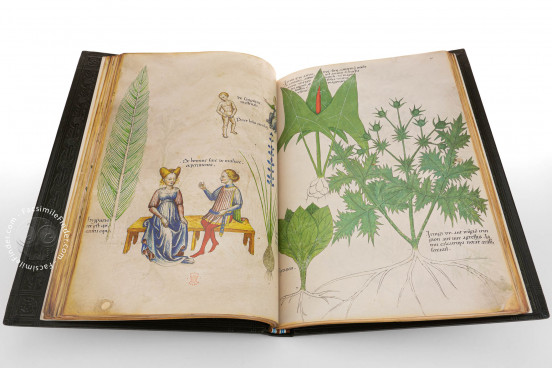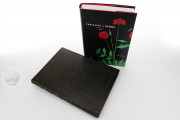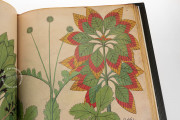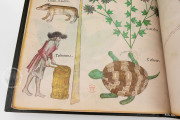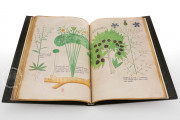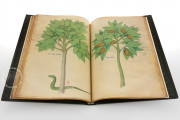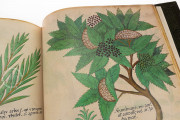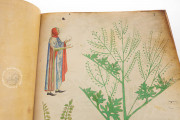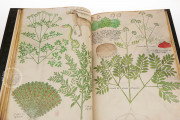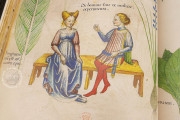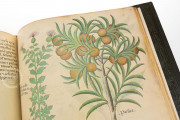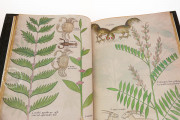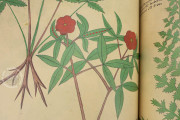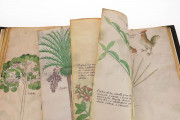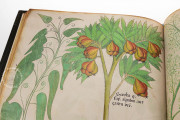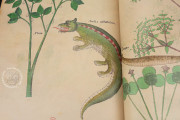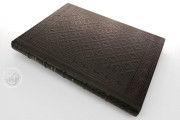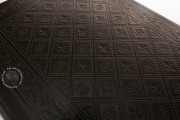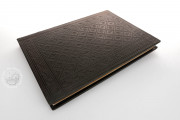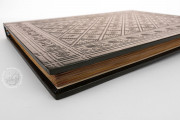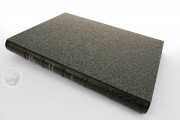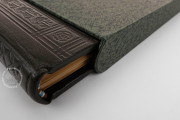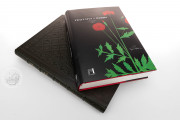The Sloane Tractatus de Herbis is a copy of the late medieval botanical text Tractatus de Herbis ("Treatise on Plants"), a compilation of hundreds of plants, animals, materials, and foods arranged alphabetically and illustrated. Every one of its 214 pages features one or more colorful illustrations, each provided with a brief caption. Many copies of the compilation survive, and this one is often referred to as the Sloane Herbal. Created in Lombardy around 1440, it is a fine copy of a new type of scientific manuscript developed during the early Italian Renaissance.
The Tractatus was created from translations of Arabic, Sanskrit, and Chinese texts and new information emanating from European universities. Patrons of manuscripts of the text were students, scholars, and wealthy collectors rather than monks and priests.
Encyclopedic Knowledge of Nature
Magnificent in its illustrative content, the Sloane manuscript is designed to be functional, rich in detail, and encyclopedic in scope. It includes depictions of animals, tools, materials, and foods among its hundreds of images of plants. This suggests a growing interest in secular books as repositories of broad types of information.
Illusionistic Renderings of Medicinal Plants
The manuscript's illustrations are illusionistically naturalistic, and they focus on details such as leaf shape, root color, and flowers. Delicate shading creates the overall effect that plants have been pressed onto the pages of the book. Text is relegated to brief captions written in a neat Gothic Rotunda focused on the names of the plants.
The New Science of the Renaissance
Unlike herbals based on ancient Greco-Roman texts popular in previous centuries, the Sloane manuscript reflects the new approach to understanding the world developed in fourteenth-century Italy. The rise of European universities coupled with translations of medieval Islamic medical texts saw the development of the transmission of information based on observation and experiment rather than tradition. The ordering of the plants alphabetically by name demonstrates the demand for objective information that is easy to access and understand.
Expensively Illuminated for a Wealthy Patron
The Sloane manuscript is one of a group of late medieval herbals that developed from the Egerton Tractatus de Herbis. Both Egerton and Sloane were produced to an extremely high standard for an unknown wealthy lay patron.
Owned by a Bibliophilic Physician
By the early eighteenth century, the Sloane Tractatus de Herbis was owned by the French bibliophile Nicolas-Joseph Foucault (1643-1721), after which it entered the library of Hans Sloane (1660-1735), a physician who avidly collected manuscripts. Sloane's manuscripts were purchased from Sloane's executors for the library of the British Museum, founded in 1753. The museum's manuscript collection was largely transferred to the British Library in 1973. The binding is full green leather tooled with a running vegetal border surrounding a field of scalloped lozenges of alternating Tudor roses and fleur-de-lis.
We have 1 facsimile edition of the manuscript "Sloane Tractatus de Herbis": Tratado de plantas medicinales facsimile edition, published by M. Moleiro Editor, 2011
Request Info / Price
